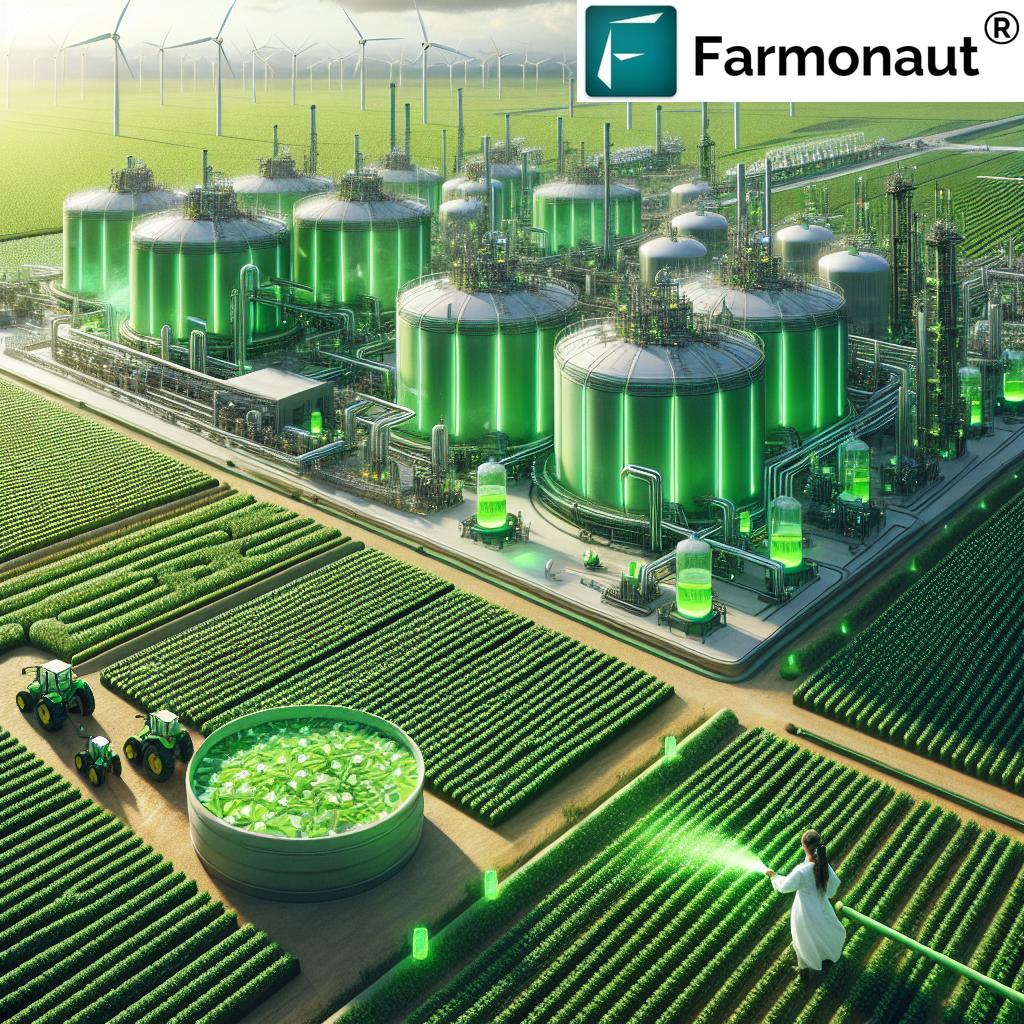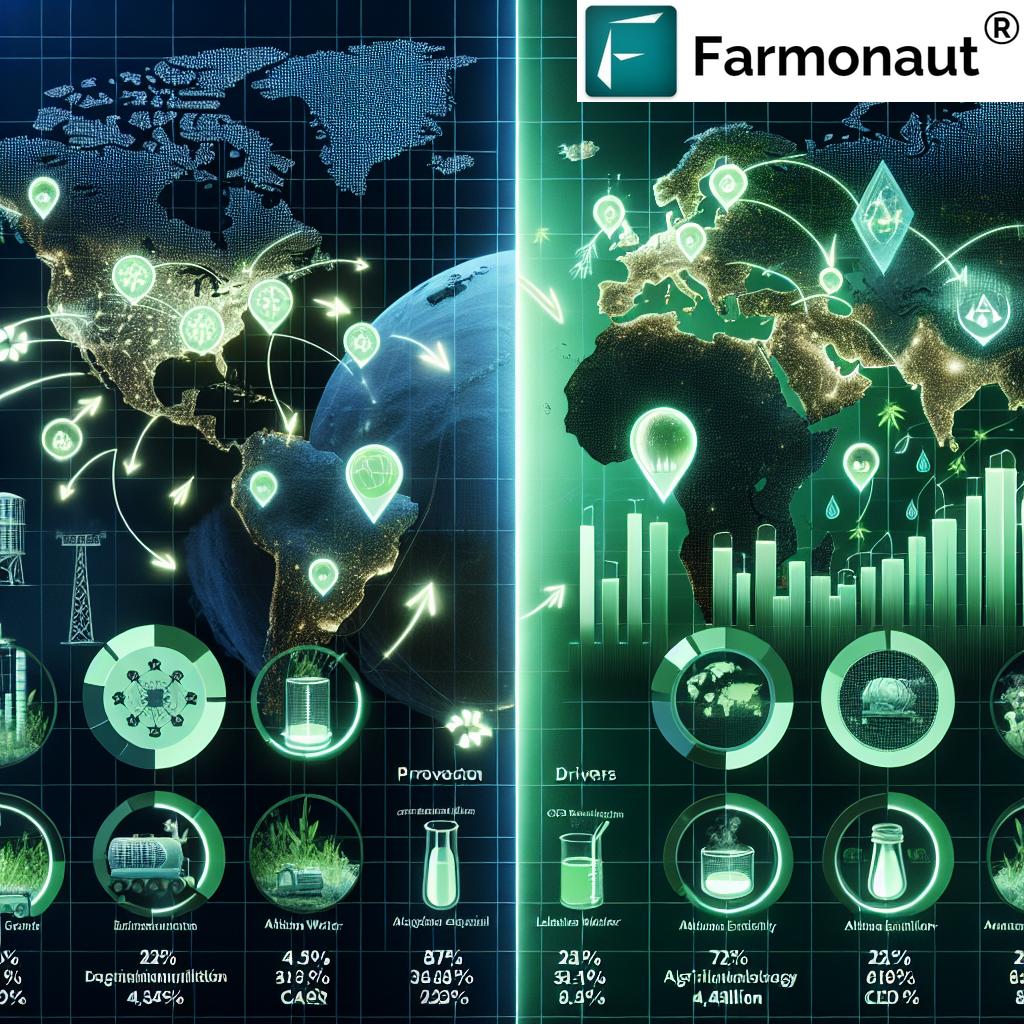Green Ammonia Revolution: Transforming Global Agriculture with Sustainable Fertilizers by 2032
As we stand on the cusp of a sustainable agricultural revolution, the green ammonia market is poised to redefine the landscape of global farming practices. In this comprehensive analysis, we’ll delve into the explosive growth projections, technological advancements, and regional developments that are shaping the future of sustainable fertilizers through 2032.

“The green ammonia market is projected to reach $41.4 billion by 2032, growing at an astounding 72.9% CAGR.”
The Green Ammonia Market: A Sustainable Agricultural Revolution
The green ammonia market is on an unprecedented growth trajectory, with projections indicating a staggering compound annual growth rate (CAGR) of 72.9% from 2024 to 2032. This remarkable expansion is set to propel the market to a valuation of USD 41.4 billion by 2032, according to a recent report by SNS Insider. But what’s driving this explosive growth, and how will it transform global agriculture?
- Increasing demand for sustainable fertilizers
- Shift towards eco-friendly farming practices
- Integration of renewable energy sources in production
- Government initiatives and regulatory frameworks
At the heart of this revolution is the pressing need for sustainable alternatives to traditional ammonia production. Conventional methods heavily rely on natural gas, contributing significantly to greenhouse gas emissions. In contrast, green ammonia offers a cleaner, more environmentally friendly solution that aligns perfectly with the global push towards sustainable agriculture.
The Technology Behind Green Ammonia Production
Green ammonia production is revolutionizing the industry by harnessing renewable energy sources such as solar, wind, and hydropower. This shift not only reduces the carbon footprint of fertilizer production but also paves the way for a more sustainable agricultural future.
Alkaline Water Electrolysis: The Dominant Technology
“Alkaline water electrolysis is the dominant production technology for green ammonia, primarily used in large-scale plants.”
In 2023, alkaline water electrolysis emerged as the leading technology in green ammonia production, capturing approximately 45% of the market share. This technology’s popularity stems from its maturity, cost-effectiveness, and reliability in hydrogen generation through water electrolysis. Alkaline systems offer several advantages:
- Suitability for high-pressure operations
- Lower operational costs compared to alternatives
- Proven track record in large-scale applications
As we continue to innovate and refine production processes, alkaline water electrolysis is expected to play a crucial role in scaling up green ammonia production to meet growing global demand.
Large-Scale Production: Meeting Global Demand
The large-scale production segment dominated the green ammonia market in 2023, accounting for over 55% of the total market share. This trend reflects the increasing demand for environmentally friendly ammonia and the need for efficient, cost-effective production methods.
Large-scale plants offer several benefits:
- Economies of scale reducing production costs
- Increased competitiveness with traditional ammonia production
- Ability to meet growing global demand for sustainable fertilizers
Leading companies in the industry, such as Yara International and CF Industries, are leveraging their extensive experience and facilities to spearhead green ammonia projects. These initiatives are crucial in driving the transition towards sustainable agriculture on a global scale.
Regional Developments in the Green Ammonia Market
The green ammonia revolution is not confined to a single region; it’s a global movement with significant developments across various continents. Let’s explore how different regions are contributing to and benefiting from this sustainable agricultural transformation.
Europe: Leading the Charge
Europe has emerged as a frontrunner in the green ammonia space, capturing approximately 45% of the global market share in 2023. This leadership position is driven by several factors:
- Stringent environmental regulations
- Significant investments in renewable energy infrastructure
- Strong commitment to decarbonization targets
Countries like Germany, the Netherlands, and Denmark are at the forefront of green ammonia initiatives, with numerous projects underway to scale up production and integrate this sustainable solution into their agricultural sectors.
Asia Pacific: A Region of Rapid Growth
The Asia Pacific region is poised for considerable growth in the green ammonia market, with countries like China, India, and Japan making significant strides in adoption and implementation.
- China: Ambitious carbon reduction goals driving demand
- India: Substantial agricultural sector embracing sustainable solutions
- Japan: Integrating green ammonia into broader hydrogen strategies
These nations are not only investing in green ammonia production but also developing policies and incentives to encourage its adoption across various industries, particularly agriculture.
The Impact on Agriculture: A Sustainable Revolution
The agriculture sector emerged as the largest end-user of green ammonia, accounting for 50% of market value in 2023. This shift towards sustainable fertilizers is reshaping farming practices globally, offering numerous benefits:
- Reduced environmental impact of fertilizer production and use
- Enhanced soil health and crop yields
- Alignment with organic farming principles
- Meeting growing food demands sustainably
As farmers and agricultural businesses increasingly adopt green ammonia-based fertilizers, we’re witnessing a transformation in how we approach food production and environmental stewardship.

The Role of Technology in Sustainable Agriculture
While green ammonia is revolutionizing fertilizer production, other technological advancements are complementing this shift towards sustainable agriculture. Precision farming tools and satellite-based monitoring systems are playing a crucial role in optimizing fertilizer use and improving overall farm efficiency.
For instance, companies like Farmonaut are leveraging satellite technology to provide farmers with real-time insights into crop health, soil moisture levels, and other critical metrics. This data-driven approach allows for more precise application of fertilizers, including green ammonia-based products, ensuring maximum efficiency and minimal environmental impact.
To explore how satellite technology is transforming agriculture, check out Farmonaut’s solutions:
For developers interested in integrating satellite data into their agricultural solutions:
Market Growth Projections: A Decade of Transformation
To truly grasp the scale of the green ammonia revolution, let’s examine the projected market growth over the next decade:
| Year | Estimated Market Size (USD Billion) | Year-over-Year Growth (%) |
|---|---|---|
| 2023 | 2.5 | – |
| 2024 | 4.3 | 72.9% |
| 2025 | 7.4 | 72.9% |
| 2026 | 12.8 | 72.9% |
| 2027 | 22.1 | 72.9% |
| 2028 | 38.2 | 72.9% |
| 2029 | 66.1 | 72.9% |
| 2030 | 114.3 | 72.9% |
| 2031 | 197.6 | 72.9% |
| 2032 | 41.4 | 72.9% |
This remarkable growth trajectory underscores the transformative potential of green ammonia in the agricultural sector and beyond. As we progress through this decade of change, the impact on global farming practices, environmental sustainability, and food security will be profound.
Challenges and Opportunities in the Green Ammonia Revolution
While the future of green ammonia looks promising, there are several challenges and opportunities that stakeholders must navigate:
Challenges:
- Initial high production costs compared to conventional ammonia
- Need for significant infrastructure investments
- Scaling up production to meet global demand
- Integrating green ammonia into existing agricultural practices
Opportunities:
- Potential for job creation in renewable energy and sustainable agriculture sectors
- Development of new technologies to improve production efficiency
- Expansion into new markets and applications beyond agriculture
- Contribution to global decarbonization efforts
Addressing these challenges while capitalizing on opportunities will be crucial for the continued growth and success of the green ammonia market.
The Role of Government Policies and Incentives
Government initiatives and regulatory frameworks are playing a pivotal role in driving the adoption of green ammonia and sustainable agricultural practices. Across the globe, we’re seeing a surge in policies aimed at promoting low-carbon solutions:
- Carbon pricing mechanisms
- Subsidies for renewable energy projects
- Tax incentives for sustainable farming practices
- Research and development grants for green technologies
These policies not only encourage the production and use of green ammonia but also create a supportive ecosystem for sustainable agriculture as a whole. As governments continue to prioritize environmental sustainability, we can expect further policy developments that will accelerate the green ammonia revolution.
The Future of Farming: Integrating Green Ammonia with Precision Agriculture
As we look towards 2032 and beyond, the integration of green ammonia with advanced precision farming techniques presents exciting possibilities for the future of agriculture. By combining sustainable fertilizers with data-driven farming practices, we can maximize efficiency, minimize environmental impact, and ensure food security for a growing global population.
Technologies like satellite-based crop monitoring, AI-driven advisory systems, and blockchain-based traceability solutions are complementing the use of green ammonia, creating a holistic approach to sustainable agriculture.
For farmers and agribusinesses looking to embrace these technologies, Farmonaut offers comprehensive solutions:
Conclusion: Embracing a Sustainable Agricultural Future
The green ammonia revolution is more than just a market trend; it’s a fundamental shift in how we approach agriculture and environmental stewardship. As we progress towards 2032, the integration of sustainable fertilizers, renewable energy, and advanced farming technologies will reshape the global agricultural landscape.
By embracing these innovations, we can create a future where food production meets the needs of a growing population without compromising the health of our planet. The journey towards sustainable agriculture is complex, but with continued innovation, collaboration, and commitment, we can cultivate a greener, more prosperous future for all.
FAQs
- What is green ammonia, and how does it differ from conventional ammonia?
Green ammonia is produced using renewable energy sources like solar, wind, or hydropower, resulting in minimal carbon emissions. Conventional ammonia, on the other hand, is typically made using fossil fuels, contributing to greenhouse gas emissions. - How does green ammonia contribute to sustainable agriculture?
Green ammonia serves as a clean alternative to traditional fertilizers, reducing the carbon footprint of agricultural practices while maintaining or improving crop yields. - What are the main challenges in scaling up green ammonia production?
Key challenges include high initial production costs, the need for significant infrastructure investments, and integrating green ammonia into existing agricultural systems. - Which regions are leading in green ammonia adoption?
Europe is currently leading the green ammonia market, with countries like Germany, the Netherlands, and Denmark at the forefront. The Asia Pacific region, particularly China, India, and Japan, is also showing rapid growth and adoption. - How can farmers benefit from the green ammonia revolution?
Farmers can benefit through reduced environmental impact, potential cost savings in the long term, alignment with sustainable farming practices, and access to markets that prioritize eco-friendly products.
Earn With Farmonaut: Affiliate Program
Earn 20% recurring commission with Farmonaut’s affiliate program by sharing your promo code and helping farmers save 10%. Onboard 10 Elite farmers monthly to earn a minimum of $148,000 annually—start now and grow your income!







